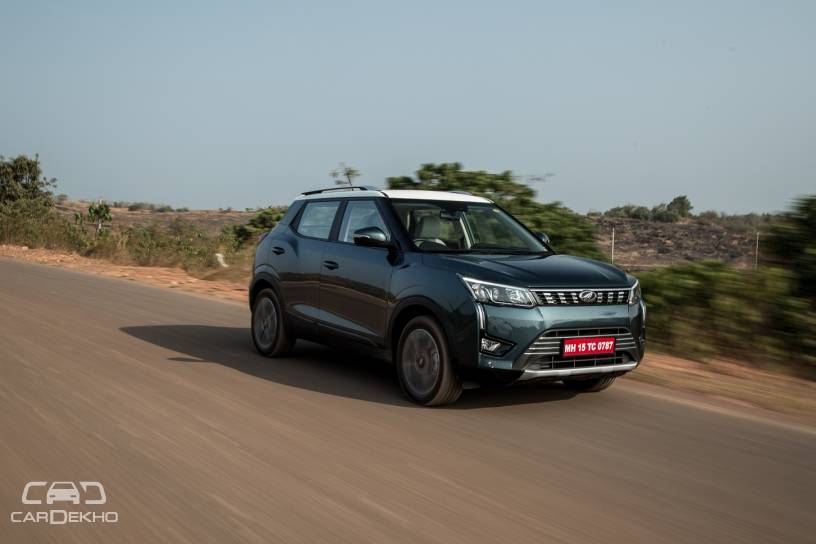Ford To Get 1.2-litre Turbo Petrol Engine From Mahindra XUV300

Back in October 2018, Mahindra and Ford had announced two MoUs for powertrain sharing and connected car solutions As part of the first deal, Mahindra said that it will develop and supply a lowdisplacement petrol engine to Ford
Mahindra had previously announced that it would share a low displacement engine with Ford. Here’s everything you need to know about it
- The powertrain sharing agreement is part of an MoU signed between Ford and Mahindra in October 2018.
- The upcoming Mahindra XUV300 will be powered by the 1.2-litre turbo petrol motor.
- It will initially be offered with a manual transmission; expect it to be paired with an automatic transmission in 2020.
- Ford’s cars will only get the BSVI versions of the new engine.

Back in October 2018, Mahindra and Ford had announced two MoUs for powertrain sharing and connected car solutions. As part of the first deal, Mahindra said that it will develop and supply a ‘low-displacement petrol engine’ to Ford. Later, Mahindra confirmed that this engine will also power the XUV300. The homegrown carmaker has now revealed the specifications of this newly developed turbo petrol engine. Here’s what you need to know about it.
The petrol engine in question is a 1.2-litre turbocharged unit. Co-developed with SsangYong, the new engine packs multi-point fuel injection like a naturally-aspirated engine. In essence, it’s quite similar to Tata’s 1.2-litre Revotron engine that powers the Nexon.
We have seen other low-displacement turbo-petrol engines, albeit with direct injection, like Ford’s 1.0-litre Ecoboost (in the EcoSport), Suzuki’s 1.0-litre Boosterjet (in the Baleno RS) and VW’s 1.0-litre TSI and Hyundai’s 1.0-litre T-GDi engines (to be offered on upcoming cars). Engines with direct injection are relatively more expensive to produce. However, direct injection helps produce more power than what the engine’s displacement would otherwise suggest. In most cases, these engines are also more fuel efficient than their MPFI counterparts.
| Manufacturer | Mahindra | Tata | Suzuki | Volkswagen | Hyundai | Ford |
| Engine | 1.2-litre | 1.2-litre | 1.0-litre | 1.0-litre | 1.0-litre | 1.0-litre |
| No of cylinders | 3 | 3 | 3 | 3 | 3 | 3 |
| Power | 110PS | 110PS | 102PS/ 111PS | 95PS/ 115PS | 100PS/ 120PS | 125PS/ 140PS |
| Torque | 200Nm | 170Nm | 150Nm/ 170Nm | 175Nm/ 200Nm | 172Nm | 170Nm/ 210Nm |
| Transmission options | 6-speed MT | 6-speed MT/AMT | 5-speed MT/6-speed AT | 5- & 6-speed MT/7-speed dual-clutch AT | 6-speed MT/7-speed dual-clutch AT | 6-speed MT |

Although the direct injection engines listed above have a smaller displacement than the MPFI engines from Tata and Mahindra, they outperform the larger engines on paper. Hyundai is likely to introduce the 1.0-litre T-GDi with its upcoming sub-4m SUV codenamed the QXi in April 2019. Volkswagen India, which currently offers the 1.2-litre TSI (105PS/175Nm) with the Polo GT and Vento TSI, is set to introduce the locally manufactured 1.0-litre TSI engine in its Hyundai Creta rival, the T-Cross, in 2020.
A locally-built Mahindra engine should give Ford a cost advantage in a cut-throat market like ours. Therefore, we expect this engine to power Ford’s range of cars that are set to be developed with Mahindra in the near future. The first of these vehicles could be a mid-size SUV based on Mahindra’s next-gen XUV500 platform. This SUV will not only rival the next-gen XUV500, but also take on the Tata Harrier and Jeep Compass.
It remains to be seen which of Ford’s car are set to get the 1.2-litre turbo-petrol from Mahindra. Ford had earlier announced that Mahindra’s engines will be offered with its present and future models starting from 2020. It added that its naturally-aspirated 3-cylinder engines from the Dragon family of petrol engines will be retained as well. Currently, the Dragon series comprises of a 1.2-litre and 1.5-litre petrol engine. And although they are not BSVI-compliant yet, Ford says they can conform with the new emission norms with a minor tweaks.














